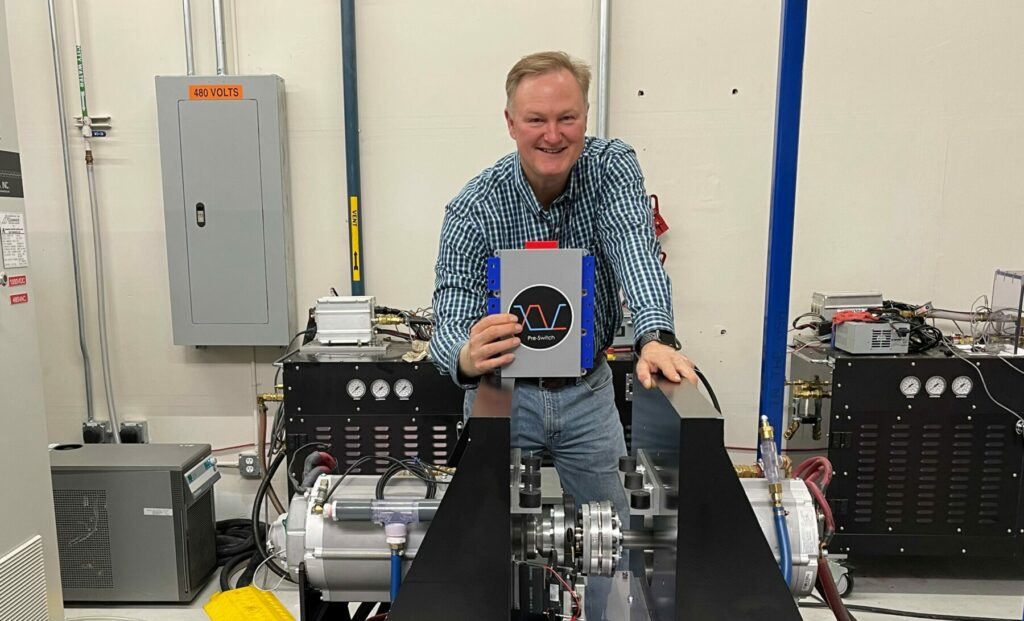Global e-mobility market experiencing the benefits of world-leading, AI-based soft-switching Pre-Switch technology.
Sep 30, 2021 San Jose, Ca., USA: Pre-Switch, Inc., the company that has developed the world’s first AI based forced resonant soft-switching technology enabling ultra-efficient DC/AC, AC/DC inverters running at 100kHz, has expanded into a new facility. The new premises will support the next phase of the company’s growth and accelerate the application of the Pre-Switch technology which extends the range of e-mobility applications including EVs, electric aircraft and electric boats and other watercraft. The technology has been licensed and delivered via the CleanWave inverter reference design to leading e-mobility innovators around the world.
Pre-Switch’s new facility, in San Jose, California, has been outfitted with a 200kW dynamometer, a 250kW DC power supply and high precision efficiency test stations that have been custom-built to precisely measure inverter efficiencies above 99%. This new and valuable resource will enable customers to experience the gains that can be achieved by running their inverters at 100kHz with virtually zero switching losses, and measure the motor efficiencies that result from the higher quality sine wave generated by the faster switching frequencies. Bruce Renouard, Pre-Switch CEO explains: “Inverter efficiency is vital, but in many applications, motor efficiency, especially at low torque where the motor mainly operates, is even more important. Only our soft-switching technology can deliver both, unlike hard-switching techniques which cannot get close to matching our system efficiency levels.”
A little over a year ago, Pre-Switch began shipping its 200kW (space vector modulated) CleanWave evaluation inverter, announcing efficiencies exceeding 99.3% at 100kHz using only three discrete, low cost 35 mΩ SiC MOSFETs per switch location, significantly better than any other available system. The Pre-Switch controller analyzes multiple inputs on a cycle-by-cycle basis, making adjustments in real time to small, forced-resonant transistors enabling perfect soft-switching. The Pre-Switch AI algorithm handles variations in system temperature, device degradation, changing input voltages and abrupt current swings.
To illustrate the benefits of the Pre-Switch approach, by utilizing the Pre-Switch technology an EV will see an increase in range of up to 12%. To support this development activity, Pre-Switch has brought in more staff, strengthening the design team, in-house manufacturing, licensing and sales support, all located at the new San Jose headquarters.
Pre-Switch: Further, Faster, Lighter, Cheaper – Cooler

